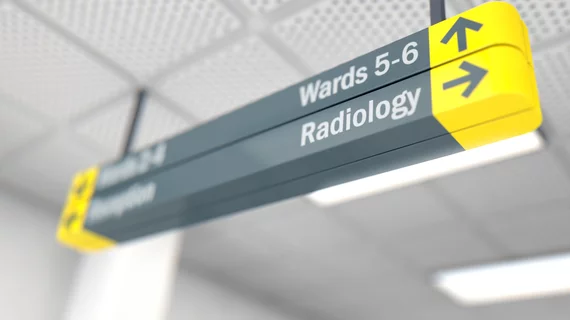Radiologists feel more confident using dual-energy CT in the ED, lowering downstream imaging costs
Using dual-energy CT in the emergency department provides clinical insights that traditional CT cannot. And for one Canadian hospital, the technique bolstered radiologists’ confidence, leading to fewer follow-up imaging exams and big savings.
Vancouver General Hospital radiologists reviewed thousands of DECT exams performed at their institution—the second largest in Canada—for their results, published Sept. 29 in AJR. Compared to traditional CT, DECT findings avoided nearly 200 recommended follow-up MRIs, along with 28 CTs and up to 25 ultrasound tests.
William D. Wong, MD, with the University of British Columbia facility, and colleagues estimated that their radiology department saved upward of $61,000 by eliminating such imaging.
“The results of this study suggest that use of DECT, by providing information not acquired with conventional CT, increased reader diagnostic confidence,” Wong et al. added in the study. “This led to reductions in the number of follow-up studies recommended and in the associated costs compared with those of conventional CT alone.”
For their research, the authors had a board-certified radiologist spot the number of times a report indicated DECT aided a rads’ interpretation. In total, they included 3,159 cases performed in 2016.
Dual-energy findings altered management in 298 (9.4%) of those situations, improved diagnostic confidence in 455 (14.4%), offered pertinent info in 174 (5.6%) of cases and helped diagnose 44 (1.4%) incidental findings.
In terms of specific anatomy, for head and neck imaging, DECT was often used to spot the difference between hemorrhaging and contrast material staining after clot retrieval for ischemic stroke. The dual-energy approach was also helpful in pulmonary embolism studies and played a “substantial” role in acute abdomen cases.
Wong et al. noted that DECT information provided no assistance in only three (0.09%) instances and wasn’t mentioned in 2,272 (71.9%) of radiology reports.
For all its positives, many hospitals have not turned to DECT due to longer postprocessing times, increased image storage requirements and rads' reluctance to either not use DEC or omit it from their reporting.
Despite this, the authors maintained the added value of DECT and called on more research into the technique.
“Further prospective studies should be conducted to appreciate the impact of DECT on patient outcomes,” Wong and colleagues wrote. “It would also be valuable to assess how referring clinicians adapt to the use of DECT and how much they trust its added value.”
Read the entire study in the American Journal of Roentgenology.

